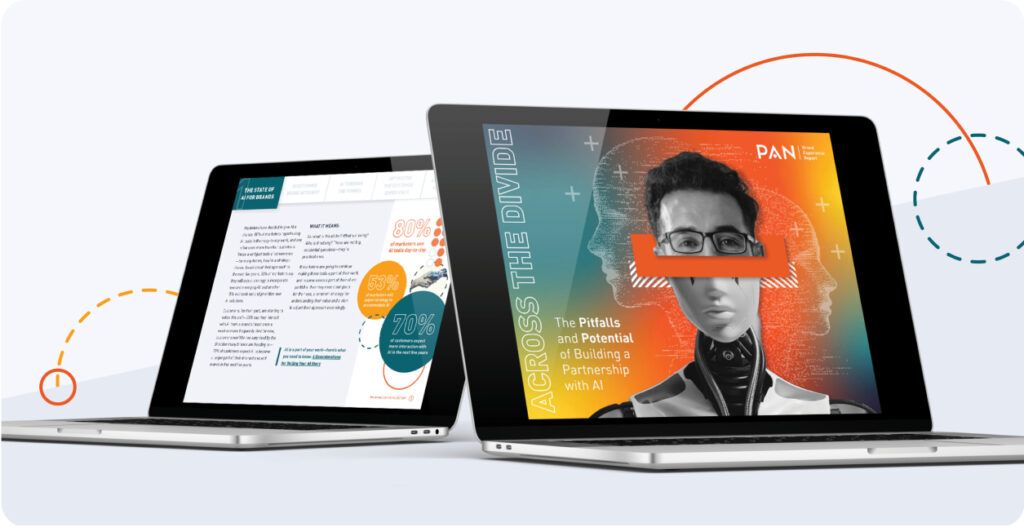What’s on the mind of digital health brands as we lead up to one of healthcare’s biggest moments of the year
HIMSS and HLTH: two monumental moments for digital health brands big and small. Thus far, 2023 has proven to be a challenging year for the industry. While the promise of innovation has excited the community, gaps between ideation and utility remain, all while brands adjust to different economic realities than in years’ past.
As we look back at HIMSS this year and look ahead to HLTH in a matter of weeks, let’s review the major milestones that will surely influence conversations during this year’s meeting.
Looking Back at HIMSS 2023
If you attended HIMSS this year, you know it was back in full swing post-pandemic. The show united more than 35,000 healthcare professionals from 90 countries to discuss topics ranging from health equity and clinician burnout to the evolving ecosystem of care delivery. PAN Healthcare Practice lead Dan Martin shared his thoughts on the trends we anticipated at the event, and no topic shined brighter or caused more debate than generative AI’s potential to impact healthcare delivery. It will be interesting to see how the conversation has evolved come October.
My biggest takeaway from HIMSS was that generative AI has definitely arrived in a big way, but the conversation is already shifting toward the guardrails that need to be in place to make these tools a success in medicine. Although everyone I talked to was obviously excited about GPT, the accuracy, safety, and patient responsibility piece of the conversation is reeling in the hype — which is probably a good thing for healthcare use cases.
Jason Barry, Digital Health Wire
Top Conversation Drivers Since HIMSS: A Continuously Evolving Ecosystem
Although it’s only been four months since healthcare stakeholders gathered in Chicago, it’s been a busy spring and summer for digital health. Let’s review:
- Emergency Officially Ends: The official end to the COVID-19 public health emergency has put us squarely in the post-pandemic era. While provisions for temporary extended coverage for telehealth were put into place, physicians and other stakeholders are still advocating to permanently expand virtual care coverage.
- Back to 2019: Rock Health issued a report that confirmed what we already know: we are in a period of less funding and tightening of wallets. So much so that 2023 is on pace for the lowest level of annual funding since 2019.
- The Patients are Not Alright: As digital health companies work to create technologies designed to help ease clinician burnt out, another cause of worry has come more squarely into focus: patient burnout. The wariness surrounding today’s care experience in the US was quantified by a Harris Poll, revealing that more than 70% of Americans feel failed by the health care system.
- Big Tech is Here to Stay: Major tech enterprises such as Google, Microsoft and Amazon continue their foray into healthcare. Just like HIMSS, they are expected to have a major presence at HLTH. As Dr. Karen DeSalvo, Google’s Chief Health Officer (and former Assistant Secretary for Health in the U.S. Department of Health and Human Services) recently remarked: “Google is a life company…not a health company. To have a high quality of life, health is very important.”
- Semaglutide Mania: Unless you’ve been living under a rock, you’ve seen the continued increase in popularity of GLP-1 drugs such as Ozempic and Wegovy. While health benefits, including cardiovascular risk reduction, continue to be touted, the popularity is leaving payers and employers with a hefty bill. And, given that they require being taken in perpetuity for continued benefit, there is no end in sight for the spend. Further, this has opened a new need for virtual care companies to tailor programs that marry the benefits seen with GLP-1s with sustained lifestyle changes.
- Instagram Influence: From Kim Kardashian to Maria Menounos, celebrities are using their platforms to discuss the benefit of preventative full body scans from companies like Prenuvo. But, it’s unclear whether these offerings should be looked at as a positive — amazing preventative tools — or a negative for an already stressed system. While it’s true they may catch disease early, some in the industry feel that these scans will cause up unnecessary worry, procedures, and misdiagnosis. And, at about $2,500 per person, the availability of these scans may only exacerbate current health inequities.
What It All Means
With HLTH around the corner, where do these changes leave us? Will the spirit of partnership and collaboration we witnessed at HLTH 2022 reemerge, as Matthew Briggs observed after last year’s event?
While there is great excitement around innovations that hold promise for better experiences for patients and providers alike, an overwhelmed system is trying to keep up, solving long-standing problems while adjusting to rapid shifts with even tighter purse strings. As a result, we find ourselves in an era that requires both nimbleness and innovation on the part of brands.
Agile marketing strategies will be key to navigating successfully — and a critical element is having a finger on the pulse of the latest conversations. By understanding the market landscape and developing targeted messaging that highlights value propositions proven by customers, digital health brands can adapt and succeed amidst these shifts.
At PAN, we pride ourselves in basing everything we do on data and analytics. With that, be on the lookout for a deeper dive into some of the top digital health trending conversations in 2023, and the opportunities we believe each conversation offers for brands.
In the meantime, learn more about PAN’s healthcare expertise and how events integrate into our service offerings to driving meaningful connections.
Will you be at HLTH? We’d love to hear from you.



